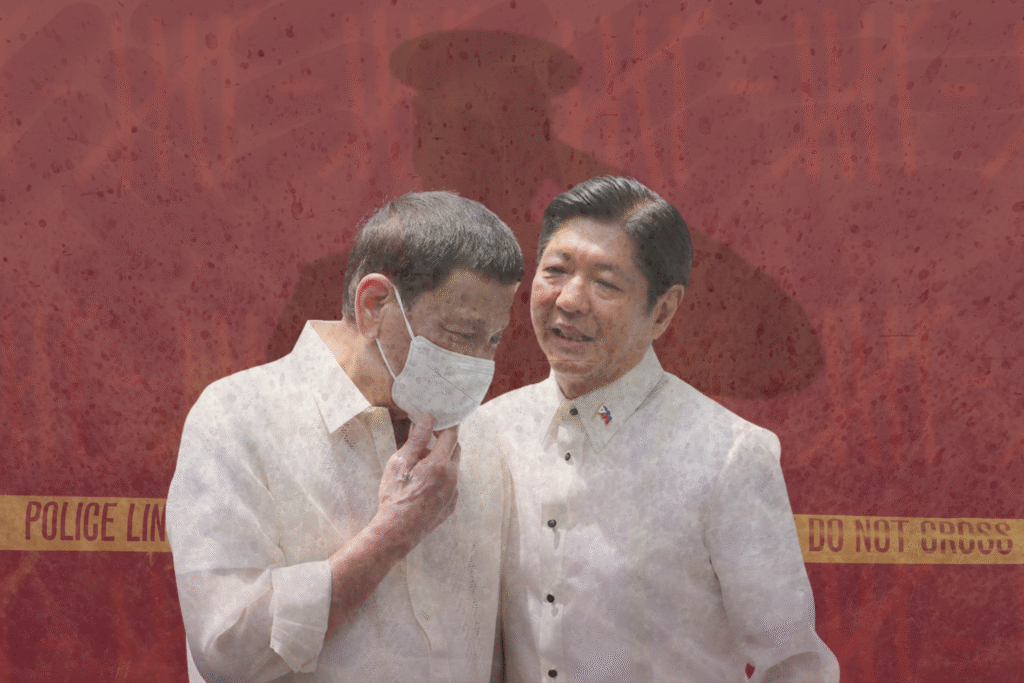Beyond the declaration, where’s the change in Marcos’ drug policy?

PRESIDENT FERDINAND Marcos Jr. has publicly maintained that his administration has departed from the brutal violence of his predecessor’s campaign against drugs. In a recent interview on Anthony Taberna’s YouTube channel, Marcos reaffirmed the “bloodless” stance, promising a shift toward prevention, rehabilitation, and community-based action.
Marcos also said, however, that he would shift “to the street level,” emphasizing that the government will focus on small-time drug peddlers to “break the cycle” at the grassroots.
A statement by newly appointed Philippine National Police (PNP) Chief Police General Nicolas Torre III on June 2 further emphasized this point. All media reported Torre’s “paramihan” remark, emphasizing that the number of arrests would be a key performance metric for police officers. Torre stated, “Kasama sa metrics natin ang number of arrests. Paramihan, paramihan.”
Empty echoes
The media did not question the president saying he would turn away from the violence of Duterte’s approach, but also undertake street level activities. Such efforts would bring to mind Duterte’s use of “tokhang,” which targeted poor neighborhoods where numerous attacks against small-time drug dealers caused countless killings. The call for “paramihan” (increase in numbers) sounded as a signal for the widespread search for suspects, which could lead to the high risk of violence in random encounters.
Media outlets such as The Philippine Star, Manila Standard, and Manila Bulletin reported on the president’s shift in focus from major drug syndicates to small-scale street peddlers, but unfortunately without question. Reports did not inquire into the “shift to the streets” as quite similar to the approach of Duterte and then PNP Chief Bato dela Rosa. Coverage also lacked reference to the “big fish” campaign that the president said he would pursue.
Alternative voices
Only Rappler cited the concerns of civil society groups about this move, raising fears that targeting low-level suspects could mirror the human rights abuses of the Duterte years. Its report included the views of experts who noted that Marcos was using the same approach as Duterte did.
Lawyer Marvic Baguilat of the UP Institute of Human Rights noted that the gaps in the shift are not unexpected because of the systemic nature of the problem and the political pressures that the government must deal with, including narratives that link drugs to crime.
Physician RJ Naguit, of the Drug Policy Reform Initiative, questioned the effectiveness of refocusing police efforts downward, warning that it could further fragment the drug response and contradict the government’s admission that syndicate-focused strategies were failing.
As current officials pledge themselves to act with respect to human rights and due process, Rappler recalled the numbers, a grim reminder that nearly 1,000 drug-related killings have occurred during Marcos’ term, according to the UP Dahas Project.
For its part, VERA Files gave space to Joel Ariate Jr., a university researcher who oversees the Dahas Project. Their report recorded a higher number than the Philippine Drug Enforcement Agency. From July 2022 to December 2023, 215 deaths by state agents from July 2022 to December 2023. Furthermore, the project reported 501 total drug-related killings in the same period, with a growing share carried out by hired assassins and unidentified gunmen rather than the police. While state-perpetrated violence declined, killings have not stopped, suggesting that killings may have been outsourced or obscured in official counts.
Ariate in VERA Files also pointed out that Davao City, once the epicenter of police-led killings, experienced a decline in such cases after the administration former President Duterte. Cebu City has emerged as the new hotbed, where contract killings tied to drug lords have become more prominent. By 2024, killings of individual drug users and those with prior drug records surged nationally, undermining the administration’s claim of pursuing a compassionate, reformist policy.
What’s left out
Moreover, media in general have not checked the administration’s fidelity to its pronounced policy to actively include rehabilitation. There has been hardly any reporting on the state of community-based treatment centers, the integration of health services in the drug program, or the participation of affected families. This failure holds back the watchdog function. Media reports Marcos Jr.’s declarations of policy, but perhaps journalists would do well to follow up to check whether his policy shift makes a difference on the ground.
Leave a Reply